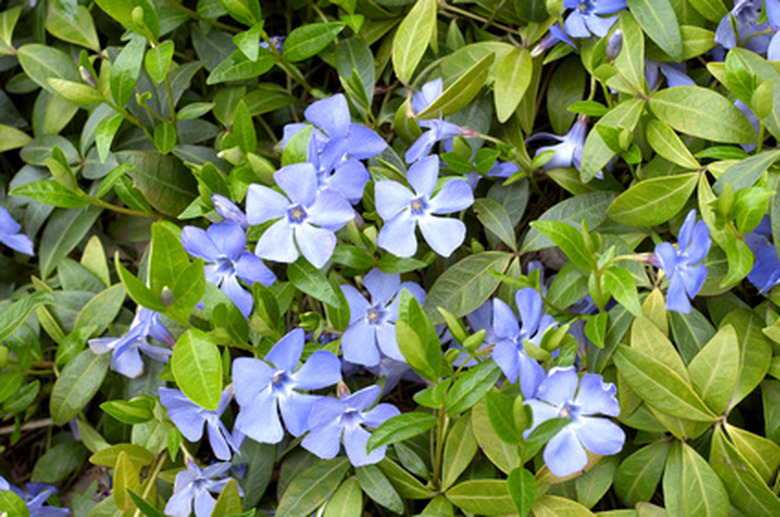How To Identify Ground-Cover Plants
Things Needed
- Digital camera
- Ruler
- Ground-cover plant list
- Scissors
Ground-cover plants serve an important purpose in the landscape. These plants lie close to the ground as a protective cover to reduce soil erosion. Ground-cover plants shield tree roots from mowers and also provide interest with foliage and flowers. Gardeners often plant ground cover as a transition between the sharp edge of a border and taller plants in the garden. Learning how to identify ground cover plants involves observing the plants to determine distinguishing characteristics.
Step 1
Observe the ground-cover plant during the growing season of late spring and summer. Note when the plant produces new growth or if it retained color during the winter. Evergreen ground covers don't lose leaves during the colder months of winter. Other types of deciduous ground covers drop leaves in the fall and die off completely above the soil level in cold weather.
- Ground-cover plants serve an important purpose in the landscape.
- These plants lie close to the ground as a protective cover to reduce soil erosion.
Step 2
Take a picture of the ground cover for use as a reference during research. Snap a close-up shot of the leaves and flowers.
Step 3
Check the growth habit of the plant by measuring the mature height and width of the cultivar. Write this information on a notepad. Measure the width of flowers and leaves to look for distinctive characteristics. Note any fragrance or colors to the leaves or flowers. Examine leaves and stems for texture or intricate shaping.
- Take a picture of the ground cover for use as a reference during research.
- Measure the width of flowers and leaves to look for distinctive characteristics.
Step 4
Check the available sunlight in the growing location. Determine whether the plant thrives in full sun, partial sun or shade or full-shade. Light requirements may be the most distinctive feature that distinguishes two plants from each other.
Step 5
Visit an online plant database to browse different pictures of ground covers. Select the search parameter "ground cover" under the plant trait section of the search engine. Fill in other pertinent information to help narrow the search parameters. Use your notes and snapshot as a reference as you move through the various pictures of ground-cover plants. Remember that many plants produce flowers in different colors. Look beyond flower color during identification.
- Check the available sunlight in the growing location.
- Use your notes and snapshot as a reference as you move through the various pictures of ground-cover plants.
Step 6
Search the weed database to ensure the plant isn't a creeping variety. This database allows you to search by distinctive characteristics to narrow down possibilities.
Step 7
Cut a full set of leaves and a single flower for analysis by a garden center or local university cooperative extension office.
